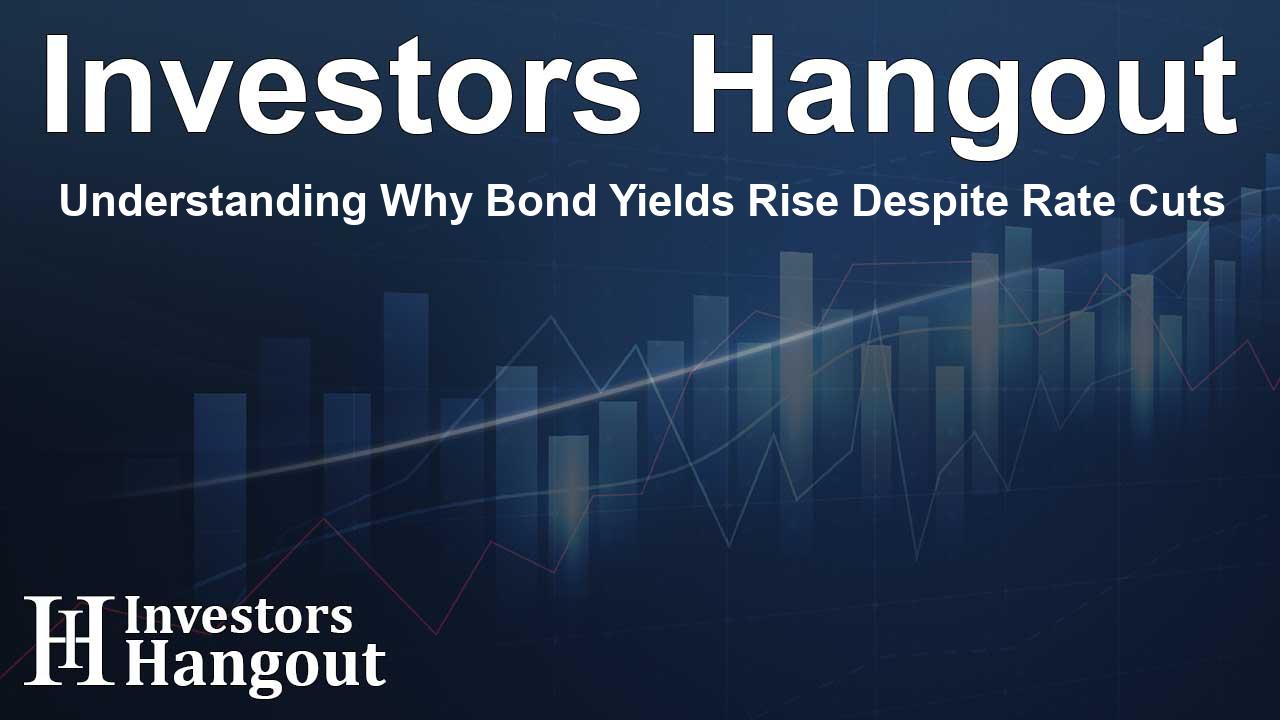Understanding Why Bond Yields Rise Despite Rate Cuts

Understanding Bond Market Reactions
Financial markets can often behave in surprising ways, leaving many investors scratching their heads. Recently, a notable incident captured attention: the Federal Reserve cut the Fed Funds rate by 50 basis points. Traditionally, such a cut might be expected to lead to falling bond yields, which are seen as a positive signal for bond purchasing. However, this time, the opposite occurred, with bond yields climbing instead. How can this be explained?
Initially, one might think that traders armed with advance knowledge of the Fed's decision would rush to buy bonds, anticipating a drop in yields. Yet, the post-announcement reality proved quite the contrary. Yields on the 10-year note, for example, rose slightly on the day of the announcement, continuing to rise over the following days.
This phenomenon calls for a deeper dive into market context. While many explanations have floated around in media discussions—like fears of inflation or various stimulus packages—it's useful to ground ourselves in the dynamics at play in the market. The anticipation of the rate cut had been building up for quite some time, leading traders to position themselves ahead of the event, which may have influenced their subsequent actions.
Market Context and Technical Analysis
On the day of the rate cut, the environment surrounding bond markets was intricate. Leading up to the decision, there had been significant speculation regarding a potential cut, and many traders had already adjusted their portfolios accordingly. Rates on 10-year notes had reflected a 1% decrease since earlier in the year, indicating that bonds had already been performing strongly.
In trading, context is everything. It involves assessing market conditions, recent trends, and the sentiments driving them. Investors can glean valuable insights through technical analysis, which often provides a clearer picture of where the market might move next.
As noted before the Fed's meeting, while many anticipated the cut, the market had become excessively bullish on bonds leading to that point. This overextension could suggest that investors were overcommitted, creating a scenario ripe for correction. When the expected news finally broke, it seemed many took the opportunity to exit positions, leading to rising yields instead of the expected fall.
The Role of Expectations in Investment Decisions
Moreover, the bond market's reaction illustrates a common phenomenon in trading: the discrepancy between expected and actual news can lead to inverse results. The phrase "buy the rumor, sell the news" resonates here, highlighting how traders often utilize anticipation to drive investment strategies. In this case, it wasn't just about the rate cut itself; the market had already priced in those expectations.
Understanding the Outcomes of Market Predictions
Interestingly, an exploration into this topic involved testing the abilities of young finance professionals with what has been termed the 'Crystal Ball Challenge'. Participants were presented with information seemingly indicative of future trends but still found themselves struggling to navigate the complexities of the market effectively. The results suggested that knowing future headlines did not translate seamlessly into successful trading.
The findings indicated that unknown factors—such as market sentiment or unpredicted reactions—also play crucial roles. Winning in trading is not just about having the right information; it's also about understanding the broader market context and dynamics at play.
The Importance of Experience and Strategy
Experience in trading offers a significant edge. Established traders appeared to navigate the challenge with much more nuance, achieving impressive returns. They were able to discern which news would impact markets significantly and adjust their strategies accordingly. Selecting the right trades based on confidence levels proved pivotal, emphasizing the need for a well-informed approach.
As we dissect the lessons learned, it's clear that both technical and macroeconomic analyses add layers to understanding how markets react. Recognizing liquidity situations and Fed sentiment can greatly enhance decision-making processes.
Conclusion
Ultimately, while it may be tempting to believe advanced knowledge of impending news is a straightforward advantage, understanding the market's intricate web of reactions transforms that knowledge into real gains. Yields may have risen post-rate cut, but seasoned investors recognize the importance of context. The key takeaway here is that success in trading lies not just in predicting future events but in processing the accompanying market reactions with clarity and strategy.
Frequently Asked Questions
What does a rate cut typically signify in financial markets?
A rate cut usually indicates that the central bank is trying to stimulate the economy by lowering borrowing costs, which can encourage spending and investment.
Why might bond yields rise even when rates are cut?
Bond yields can rise due to market conditions, excessive optimism, or profit-taking by investors, who may sell bonds anticipating future economic conditions.
How does technical analysis benefit traders?
Technical analysis helps traders assess market conditions and trends, allowing them to make informed decisions based on price movements and patterns.
What does the phrase 'buy the rumor, sell the news' mean?
This phrase describes a common market behavior where traders anticipate news and buy ahead of it, often selling once the news is released, leading to potentially falling prices.
How important is experience in trading?
Experience is crucial in trading as it allows traders to better interpret market signals, manage risk, and make informed decisions based on past insights and strategies.
About The Author
Contact Dylan Bailey privately here. Or send an email with ATTN: Dylan Bailey as the subject to contact@investorshangout.com.
About Investors Hangout
Investors Hangout is a leading online stock forum for financial discussion and learning, offering a wide range of free tools and resources. It draws in traders of all levels, who exchange market knowledge, investigate trading tactics, and keep an eye on industry developments in real time. Featuring financial articles, stock message boards, quotes, charts, company profiles, and live news updates. Through cooperative learning and a wealth of informational resources, it helps users from novices creating their first portfolios to experts honing their techniques. Join Investors Hangout today: https://investorshangout.com/
The content of this article is based on factual, publicly available information and does not represent legal, financial, or investment advice. Investors Hangout does not offer financial advice, and the author is not a licensed financial advisor. Consult a qualified advisor before making any financial or investment decisions based on this article. This article should not be considered advice to purchase, sell, or hold any securities or other investments. If any of the material provided here is inaccurate, please contact us for corrections.
